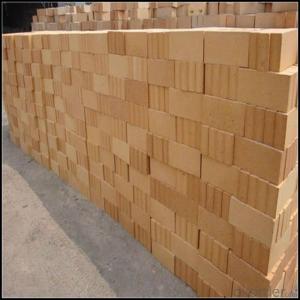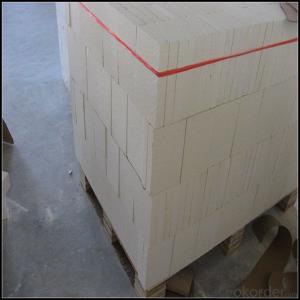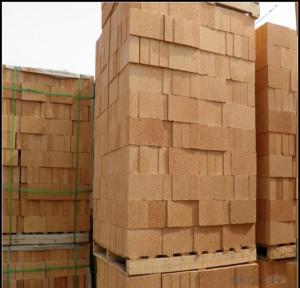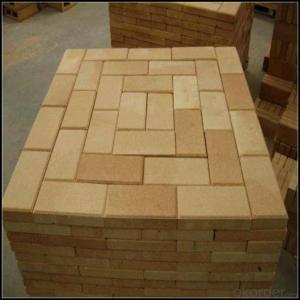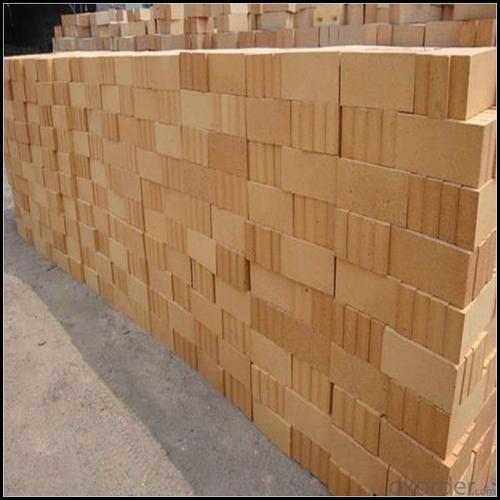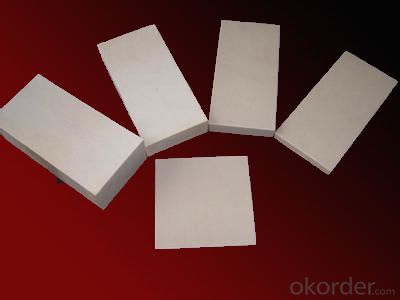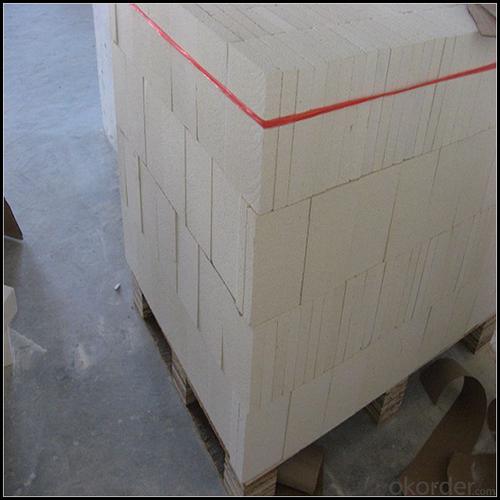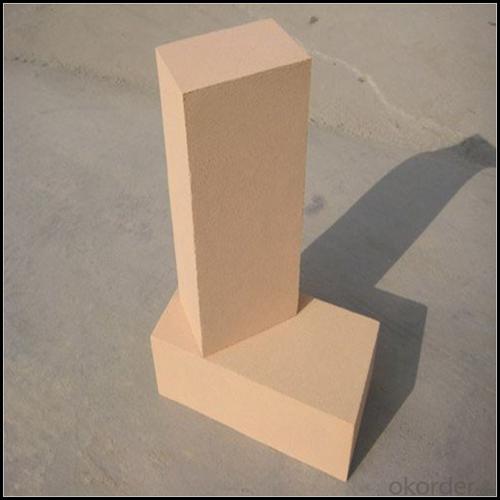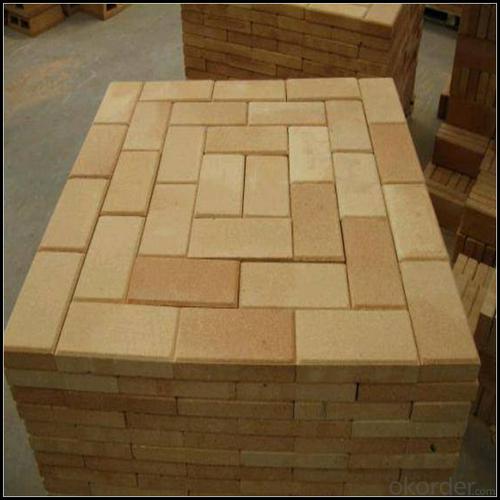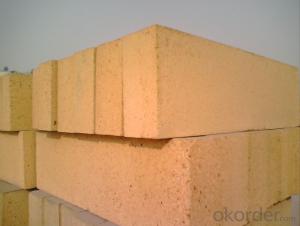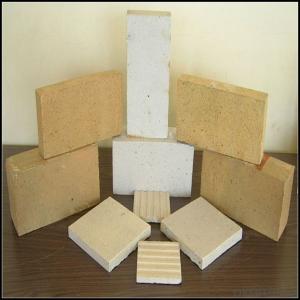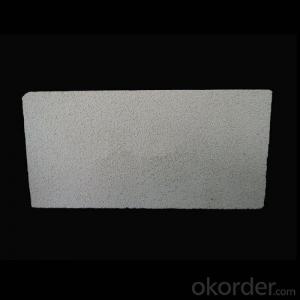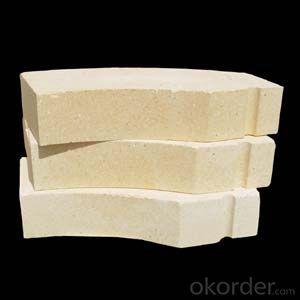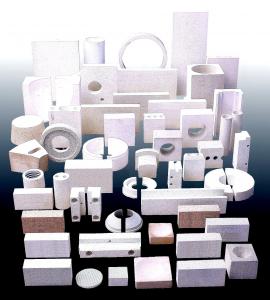High Alumina Insulating Fire Bricks for High Temperature Working
- Loading Port:
- China main port
- Payment Terms:
- TT OR LC
- Min Order Qty:
- 1 m.t
- Supply Capability:
- 500 m.t/month
OKorder Service Pledge
OKorder Financial Service
You Might Also Like
Refractory Brick
CMAX firebricks are classified under temperature between 1300℃ to 1700℃, manufactured from high purity alumina clay by mixing, press-forming, drying, sintering and machining. Bricks contain carefully-graded organic fillers which are burned out during sintering to give a uniform controllable pore structure. This technique makes product feature low thermal conductivity and excellent heat insulation
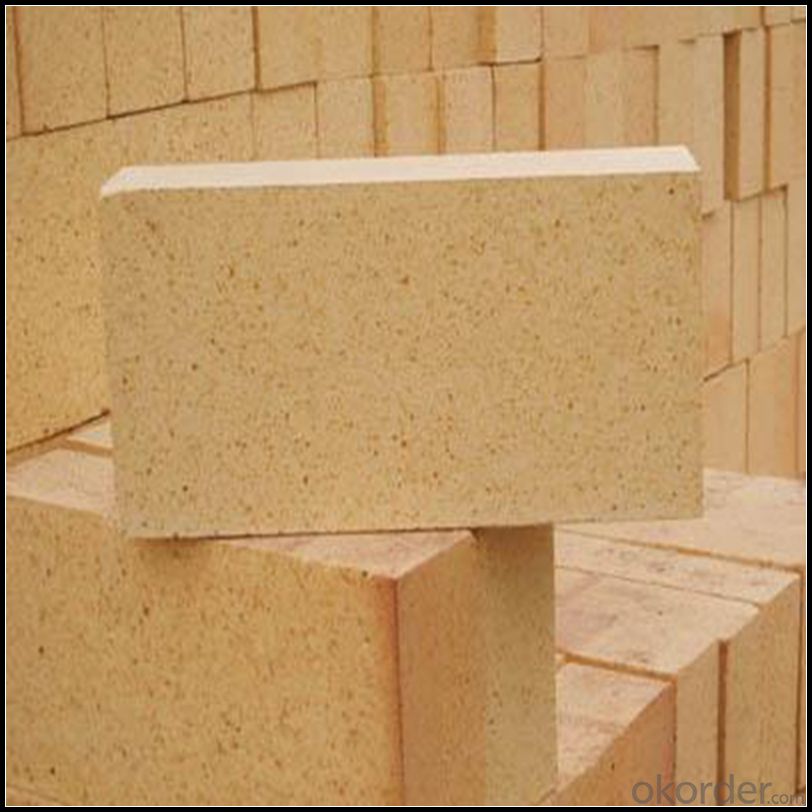
Advantages of high alumina brick
1 Excellent thermal stability
2 High refractoriness under load
3 Chemical stability and anti-corrision
4 Small high temperature creep rate
5 Excellent thermal shock resistance
Characteristices of high alumina brick
1.High intensity for pressure
2. Good thermal shock stability
3. Strong abrasion and corrosion resistance
4. High cold crushing strength
5. Excellent abrasion resistance at cold and hot conditions
Application
1. Furnaces of metallurgy industry, heat treatment furnace
2. Furnaces of chemical industry and construction industry.
3. Furnace of incineration of garbage, recirculating fluidized bed furnace
Data Sheet
Classification Temperature (℉/℃) | 3000/1650 |
Bulk Density (g/cm3 ) | ≤1.0 |
Thermal Conductivity | |
800℃, W/m.K | ≤0.39 |
1000℃, W/m.K | ≤0.43 |
1200℃, W/m.K | ≤0.48 |
Reheating Linear Change (%) | 1550℃×12h |
≤0.9 | |
Chemical Composition (%) | |
Al2O3 | ≥75 |
Fe2O3 | ≤0.5 |
Packaging & Shipping
Packaging Details:Be packed in fumigated wooden pallets
Delivery Detail: 30 days after order

Our Services
Optimum solution and product supply of refractories for high temperature industries, such as iron steel, non-ferrous, petrochemical and building materials.
Engineering design, contract and consult for refractories, and civil architecture design.
Research, development, manufacture and sale of superhard materials.
R&D, manufacture and sale of special packing materials for export.
Inspection, supervision and arbitration of refractories.
Consultation and services in refractories information.
Training and cultivation of high-level talents in refractories profession
Sales Network

Company Information
CNBM (China National Building Material) Group is the largest comprehensive building materials group in China that in integrate scientific research, manufacturing and logistics into one entity. The largest building materials and equipment specialists in China. Upon State Council approval, today CNBM owned more than 300 subordinate manufacturing factories and servicing companies. There are 6 fully owned public listed companies and 11 partially owned with substantial shares public listed companies. In many of these fields, CNBM is playing the leading role in the building industry in the country.
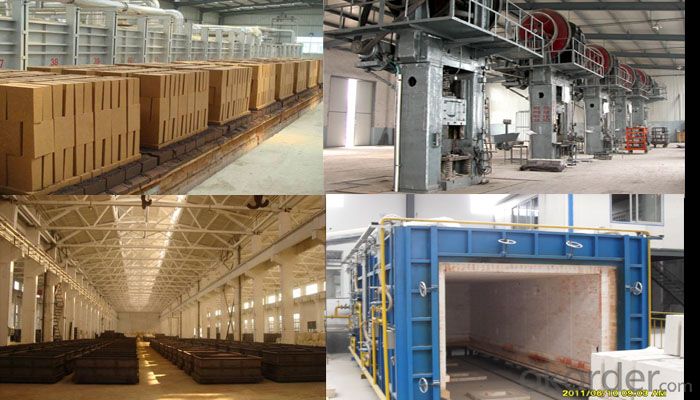
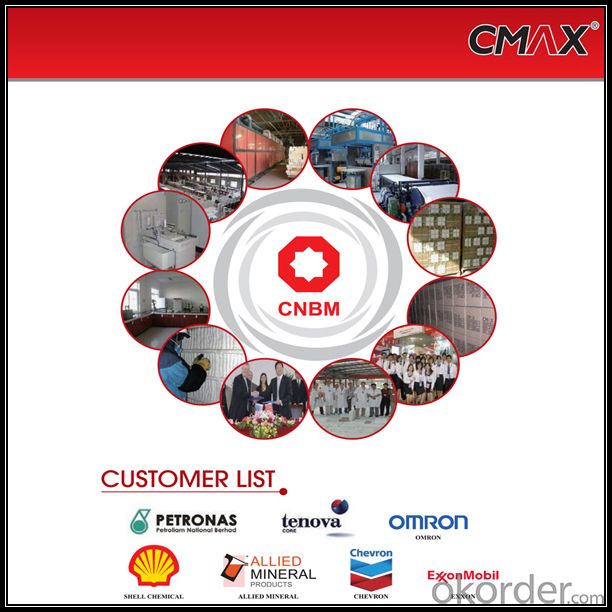
FAQ
1. Which products do you have?
We have all kinds of refractory brick, castable, mortar, cement, ceramic fiber products, etc.
Or you could browse our products to choose what you need.
2. Can you give me a brief introduction of the application of your products?
We are mainly specializing in the refractory materials in iron and steel, cement, glass, ceramics, petrochemical, electric power Industry, etc.
3. If I need your offer, what information do you need?
In order to choose suitable products, it will be appreciated to provide us the information, such us specification, technical data, order quantity, products application etc. If any question, please contact us freely.
- Q: Can insulating fire bricks be used for insulation in heat recovery systems?
- Indeed, insulating fire bricks have the capability to serve as insulation within heat recovery systems. These bricks are specially crafted to endure elevated temperatures and deliver efficient thermal insulation. By possessing low thermal conductivity, they possess the ability to reduce heat dissipation and enhance heat recovery within a system. Consequently, they are frequently implemented in diverse industrial settings, including kilns, furnaces, and ovens, where temperature regulation and energy efficiency are paramount. Therefore, these bricks present a viable option for insulating heat recovery systems, facilitating the optimization of waste heat recovery and utilization.
- Q: Are insulating fire bricks resistant to high-velocity gas flow erosion?
- Yes, insulating fire bricks are generally resistant to high-velocity gas flow erosion. These bricks are designed to withstand high temperatures and are made from materials that can withstand the erosive effects of gases flowing at high velocities. However, the resistance may vary depending on the specific composition and quality of the fire bricks.
- Q: Can insulating fire bricks be used for insulation in power boiler walls?
- Certainly! The application of insulating fire bricks for insulation in power boiler walls is possible. These bricks are specifically engineered to possess a low thermal conductivity, thereby enabling them to efficiently insulate power boilers operating at high temperatures. Constructed from lightweight materials like clay and other refractory substances, these bricks exhibit exceptional insulation characteristics while enduring the extreme heat encountered in power boilers. By integrating insulating fire bricks into power boiler walls, heat loss can be minimized, energy efficiency can be enhanced, and the boiler can sustain optimal operating temperatures.
- Q: Can insulating fire bricks be recycled or reused?
- Insulating fire bricks have the potential to be recycled or reused. These bricks are composed of various materials like alumina, silica, and clay, which can be broken down and utilized in the production of fresh bricks. Recycling involves crushing the bricks into a fine powder and combining it with other raw materials to form new bricks. Additionally, reusing insulating fire bricks is viable in specific applications. If the bricks are still in good condition and undamaged, they can be extracted from one structure and employed in another. This practice decreases waste and conserves resources. In summary, whether through recycling or reusing, insulating fire bricks possess the ability to have a secondary life, contributing to a more sustainable and environmentally-friendly construction industry.
- Q: Can insulating fire bricks be used in the construction of lime production molds?
- Indeed, insulating fire bricks are capable of being utilized in the creation of lime production molds. These bricks are engineered to possess exceptional thermal resistance, rendering them exceptionally suitable for situations necessitating insulation and safeguarding against intense heat. Given that lime production molds generally entail elevated temperatures throughout the firing procedure, insulating fire bricks can effectively uphold the desired temperature and prevent heat dissipation. Moreover, the insulating attributes of these bricks can effectively curtail energy consumption and enhance the efficacy of the lime production process. Thus, opting for the utilization of insulating fire bricks in the construction of lime production molds proves to be an appropriate decision.
- Q: What is the bulk density of the sintered bricks?
- The Dragon such high aluminum refractory brick density is generally around 1000, heavy refractory brick, high alumina brick HLGX heavy weight in general 2000Kg/m fand.
- Q: How durable are insulating fire bricks?
- Insulating fire bricks are known for their exceptional durability and longevity. These bricks are made from high-quality refractory materials, such as alumina and silica, which possess excellent thermal resistance and mechanical strength. As a result, insulating fire bricks can withstand extreme temperatures ranging from 1300°C to 1800°C (2372°F to 3272°F) without losing their structural integrity. The durability of insulating fire bricks can be attributed to several key factors. Firstly, their low thermal conductivity allows them to effectively insulate heat and prevent thermal shock, which is crucial for ensuring their long-term durability. Additionally, the high melting point of the refractory materials used in their production contributes to their ability to withstand intense heat. Moreover, insulating fire bricks are resistant to chemical erosion and corrosion, making them suitable for various industrial applications. They can withstand exposure to harsh chemicals, acids, and alkalis, ensuring their durability even in demanding environments. Furthermore, insulating fire bricks have a low density, making them lightweight and less susceptible to cracking or breaking under pressure. This characteristic enhances their durability and ease of handling during installation or maintenance. Overall, insulating fire bricks are highly durable and can withstand extreme temperatures, thermal shock, chemical erosion, and mechanical stress. Their exceptional durability makes them a preferred choice for applications such as furnaces, kilns, ovens, and other high-temperature environments where thermal insulation and long-lasting performance are essential.
- Q: Do insulating fire bricks have a high thermal shock resistance?
- Yes, insulating fire bricks typically have a high thermal shock resistance. These bricks are specifically designed to withstand rapid changes in temperature without cracking or breaking. They are made from lightweight refractory materials that have low thermal conductivity, which helps to minimize heat transfer and prevent thermal stress. Additionally, insulating fire bricks often go through a firing process that further enhances their thermal shock resistance. Overall, these bricks are well-suited for applications where they are exposed to extreme temperature fluctuations, making them a reliable choice for insulation in high-temperature environments.
- Q: Can insulating fire bricks be used in high-temperature insulation applications?
- Indeed, high-temperature insulation applications can employ insulating fire bricks. These bricks are specifically engineered to endure and preserve heat in elevated temperatures. With their low thermal conductivity and exceptional insulation capabilities, they prove to be the perfect choice for containing and insulating high temperatures. Their widespread usage can be observed in industries like steel, glass, and ceramics, as well as in furnaces, kilns, and other equipment operating at extreme temperatures. By effectively retaining heat and minimizing energy loss, insulating fire bricks offer a dependable and efficient insulation solution for high-temperature environments.
- Q: Can insulating fire bricks be used in aluminum furnaces?
- Indeed, aluminum furnaces can utilize insulating fire bricks. These bricks are specifically engineered to possess exceptional thermal insulation characteristics, rendering them ideal for deployment in high-temperature settings like aluminum furnaces. Their capacity to endure the intense heat generated during aluminum melting and their ability to preserve heat within the furnace contribute to enhanced energy efficiency. Moreover, insulating fire bricks offer additional benefits such as shielding against heat dissipation, mitigating the likelihood of overheating, and facilitating a more steady and regulated heating procedure.
Send your message to us
High Alumina Insulating Fire Bricks for High Temperature Working
- Loading Port:
- China main port
- Payment Terms:
- TT OR LC
- Min Order Qty:
- 1 m.t
- Supply Capability:
- 500 m.t/month
OKorder Service Pledge
OKorder Financial Service
Similar products
Hot products
Hot Searches
Related keywords
